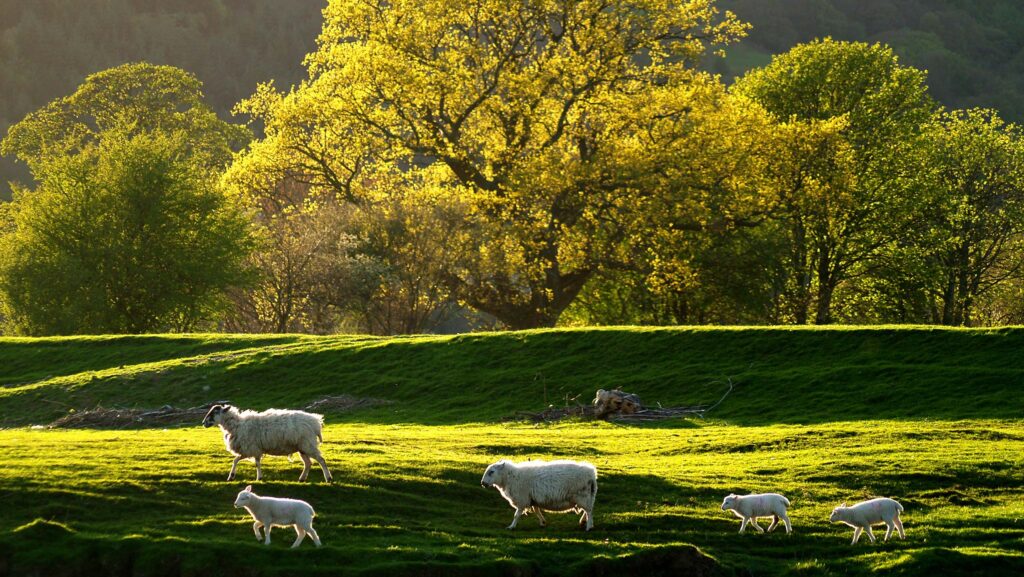Welsh government drops controversial 10% tree cover plan
 © Adobe Stock
© Adobe Stock Farmers in Wales won’t need to have 10% tree cover on their land to qualify for government funding after it was announced today (25 November) that the controversial requirement has been scrapped.
After huge pressure from the industry, which saw thousands of farmers and agricultural workers protesting outside the Senedd in Cardiff and across Wales, the Welsh government has overhauled the Sustainable Farming Scheme (SFS).
It has ditched the compulsory tree cover target, replacing it instead with a “scheme-wide ambition”, although no figure has yet been agreed.
See also: Analysis – Can Welsh tree cover plans work for farmers?
Farmers will however be required to introduce more trees and hedges onto their farm over time to be eligible for future baseline payments.
They must develop an action plan, based on mapping data supplied by Rural Payments Wales, identifying areas where trees and hedges can be introduced.
For farmers whose land already has suitable tree and habitat cover, this will be reflected in an uplift in the universal payment.
Habitat remains
While it has relented on trees, the government hasn’t budged on its insistence that every farmer who signs up to the SFS must manage at least 10% of their farm as habitat.
It is offering a softener though, including options within the scheme that allow farmers to create temporary habitat, which it has pledged will be workable for all farming systems and land ownership.
Details of the new-look SFS were announced at the Royal Welsh Winter Fair at the Llanelwedd showground by the Welsh rural affairs minister Huw Irranca-Davies.
“It was clear changes were needed – we said we would listen – and we’ve done just that,” he said.
But what he couldn’t give details on were payment rates – these won’t be announced until economic analysis and impact assessment work has been carried out.
Details
The latest update comes in the form of a document outlining in more detail how it will all work.
Farmers will still need to deliver a set of mandatory measures, known as “universal actions” to qualify for the most basic payment, but five in the original list have been dropped, including tree cover and the requirement for all farms to have wash stations.
Establishing multispecies cover crops, managing heavily modified peatlands and creating ponds and scrapes have also been removed – these will instead qualify for optional payments.
The government has also gone further with the actions it has retained from its initial 17 options, making changes to 10 of those 12.
Management of sites of special scientific interest (SSSIs) which had previously been excluded from payments is now included in the universal actions.
Another contentious issue under the SFS’s previous guise was the exclusion of common land, but farmers with common land rights will now be entitled to baseline payments.
Tree planting now falls under the “optional” actions that farmers can add to their subsidy contract for extra funding.
Farmers can therefore decide themselves where they want to add more trees and hedges, and how many.
Third tier
As before, there is also a third tier of support, “collaborative” actions, with voluntary measures for farmers to deliver action at a local, landscape, catchment, or national scale.
The reworked scheme reflects input from the ministerial roundtable of farming unions, environmental groups and other stakeholders and the Carbon Sequestration Evidence Review Panel, both established by Mr Irranca-Davies after Lesley Griffiths lost her job as rural affairs minister.
Reaction
Country Land and Business Association director for Wales Victoria Bond described the updated scheme as a “shift in the right direction”, while Farmers’ Union of Wales president Ian Rickman said “we are now in a better place”.
NFU Cymru president Aled Jones said he was confident that, if the partnership approach to developing the SFS continued, it can “help to deliver on our ambitions for food, nature, climate and communities”.
Wildlife Trusts Wales director Rachel Sharp said the exclusion of water management and shelter for livestock in the universal tier would “need addressing in higher tiers of the scheme”.
Further work
Economic analysis and impact assessment work will now be carried out to establish what the new scheme will mean at a farm level before a decision is made in summer 2025 on the final details.
The scheme will start in 2026, but there will be the choice of receiving either SFS payments or the Basic Payment Scheme (BPS) payment until 2029, before the BPS is removed entirely in 2030.
Mr Irranca-Davies said that the “next four or five months now up until the summer of next year” would involve detailed modelling, looking at how the payments line up between individual elements of the scheme and bringing forward a completed plan.
“That will then allow us to actually have the full launch in 2026 – and when I say 2026, I mean that as we click into 2026 that’s when we should aim to launch it,” he told Farmers Weekly.
“That then gives the certainty to farmers that, in terms of their financial planning going ahead, they’ll know by the end of the summer where rates are, what the budget is, how this is going to work, and then they can actually plan for 2026.”
